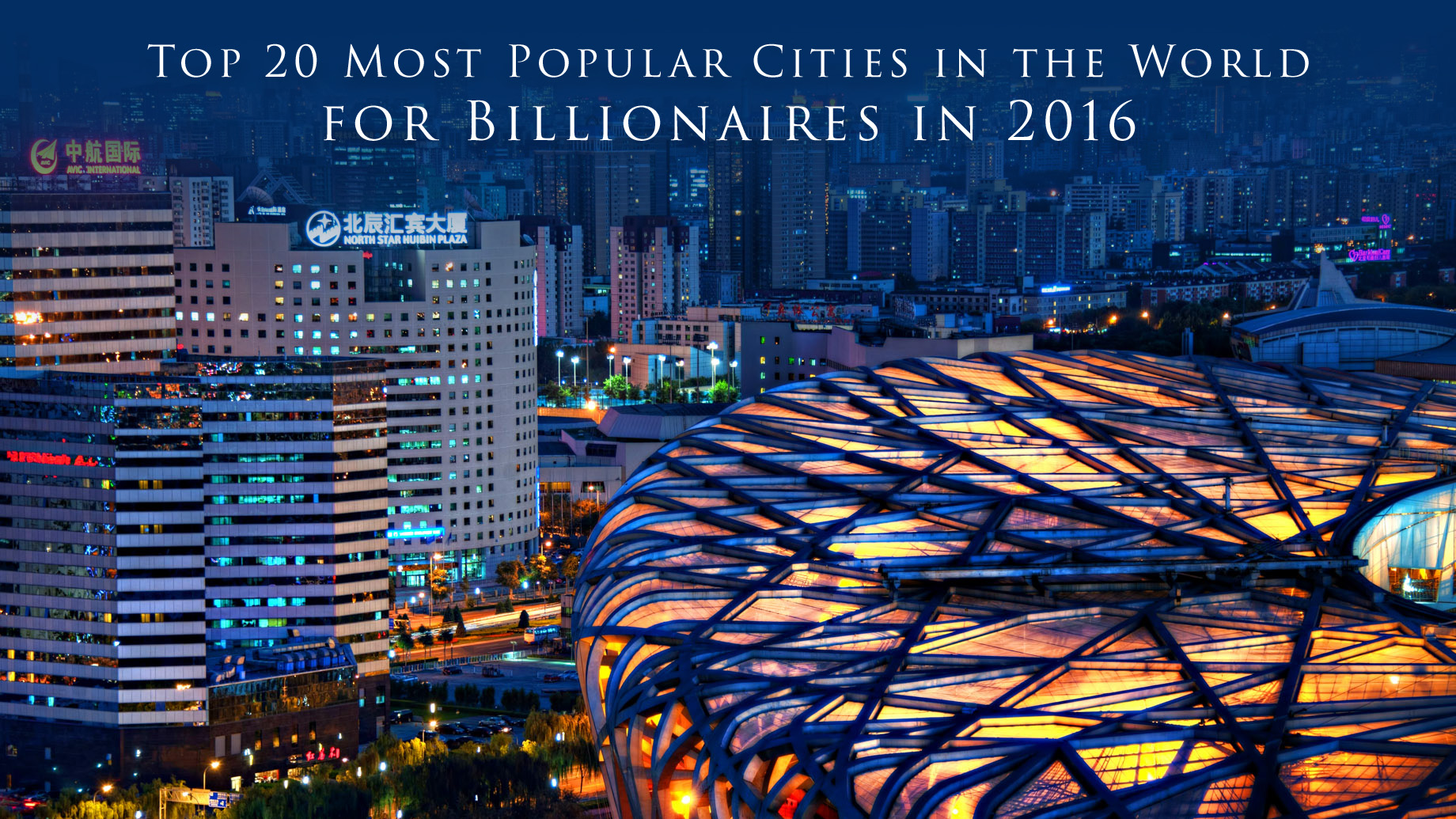
Once a person reaches billionaire status, that individual truly has the freedom to live wherever they choose on a global scale, however the world’s ultra-rich tend to be concentrated in a select number of UHNW mega-cities.
Recently, the dominance of New York and London being the traditional capitals of global wealth are being challenged by impressive economic growth in China giving rise to an 80% increase in Chinese billionaires since 2013.
According to the 2016 Hurun Global Rich List there are now 2188 billionaires in the world, with a total of 568 Chinese billionaires overtaking the 535 billionaires in the United States, for the top spot in 2016 on a country basis.
It should be no surprise then that Beijing in China surpassed New York for the very first time in 2016 as the “Billionaire Capital of the World” when it comes to the most popular city for global billionaire primary residences.
Led by Beijing as the new top billionaire city in the world, 5 Chinese cities make the top 10 cities for super wealth creators. Beijing, Hong Kong, Shanghai, Shenzhen and Hangzhou are home to 100, 64, 50, 46 and 32 billionaires respectively.
Top 20 Billionaire Cities for 2016
- Beijing, China – 100
- New York, USA – 95
- Moscow, Russia – 66
- Hong Kong, China – 64
- Shanghai, China – 50
- London, UK – 50
- Shenzhen, China – 46
- Mumbai, India – 45
- Hangzhou, China – 32
- Paris, France – 30
- San Francisco, USA – 28
- Istanbul, Turkey – 28
- Singapore – 27
- Seoul, South Korea – 27
- Tokyo, Japan – 26
- San Paulo, Brazil – 24
- Bangkok, Thailand – 24
- Taipei, Taiwan – 23
- Los Angeles, USA – 21
- New Delhi, India – 20
Over the past several decades, the wealth growth of the world’s super-rich population has defined the evolution of traditional global mega-cities as the leading crucibles of achieving billionaire status. While the dominance of traditional mega-centers such as New York and London is now being questioned by the impressive economic growth of China, ultimately the geography of billionaire residency within specific cities is highly unpredictable because of UHNW individual’s demographic mobility.